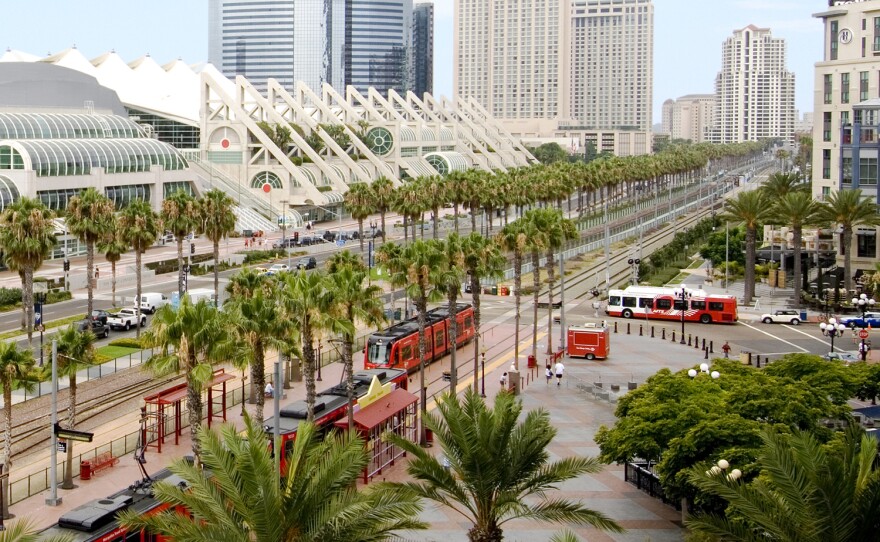For the past three years, the San Diego Convention Center’s insurers have urged officials to replace some of the building's fire sprinklers with bigger ones where packed crowds congregate.
“The greatest risk at this facility is a fire in one of the exhibit halls,” a 2014 risk report done by the insurer, Affiliated FM, stated. “Based on recent fire testing by FM Global, K11.2 or larger sprinklers are recommended to provide the best fire protection.”
But in a memo earlier this year, a convention center official said there were no plans for bigger sprinklers.
Lawyer Cory Briggs said the sprinklers are one of several fixes needed at the convention center but delayed because there’s no money.
“They say one year, OK, we’ll think about it,” Briggs said. “The next year, we’re going to get some quotes. The third year, we’re not going to do anything about it. That’s irresponsible.”
Briggs successfully sued the city claiming its financing scheme for the $520 million convention center expansion required a public vote. Briggs said the list of repairs is proof that operators aren’t ready to oversee an even larger facility.
Convention center officials downplay the problem.
“The suggestion that this facility is in disrepair is inaccurate,” said Steven Johnson, the convention center's vice president of public affairs.
He said the larger recommended fire sprinklers are due to be installed next year at a cost of $700,000.
But why did it take three years?
“It’s not the only thing that needs to happen in the building,” Johnson said. “You have to look at the whole picture and decide what is a priority to put first and foremost. We evaluated with the city’s fire department the immediacy of that and that was not an immediate issue.”
Mary Lewis, the city of San Diego’s chief financial officer, said the repairs have been misrepresented as an accumulation of needed work. She described the work as a longer-term plan to fix normal wear and tear on a building that opened in 1989.
“I think there’s a mischaracterization of what the needs are that have been identified for the next five years as a backlog.”
Briggs called that bureaucratic spin.

“What they’re planning to do in the coming five years is to fix what they haven’t been doing in the last 15 to 20 years,” Briggs said. “I don’t care what label you put on that. If it walks like a duck, quacks like a duck, it’s a duck.”
And the convention center’s own president and chief executive officer, Carol Wallace, implied in a 2013 memo that the center did have a backlog. Wallace wrote of an "urgency to address deferred maintenance in excess of $30 million.”
Wallace also wrote that the facility’s reserve account had been depleted by the failed $10 million effort to expand the center. So now the question remains: how to pay for the $30 million in repairs that the convention center needs?
When the convention center opened in 1989, Johnson said the city set aside money each year to run the facility, pay for maintenance and repairs and fund future projects. But years later, the city eliminated that funding and required the convention center to make annual requests for money.
Johnson said the city now gives the convention center $3.4 million every year. But nearly $2 million of that is spent on a contract with the San Diego Tourism Authority to market the building. The convention center’s annual budget is $30 million.
Johnson said it’s not enough to pay for the center’s upkeep.
“The real big challenge we face is funding the replacement of the Sails Pavilion,” Johnson said.
The 90,000-square-foot Sails Pavilion has a concrete floor and a canopy. Replacing it would cost $15 million. The corporation is looking at offering naming rights to companies in exchange for paying for the replacement.
That practice, said Briggs, is an admission that the city and the convention center corporation still do not have a funding mechanism that allows it to break even.
San Diego CFO Lewis said it’s the city’s job to keep the convention center in shape.
“It’s in the city’s economic interest to keep the convention center in good repair,” Lewis said. “It’s an economic driver for the city.”
She said the convention center's humming business is proof that the city is honoring its commitment.







